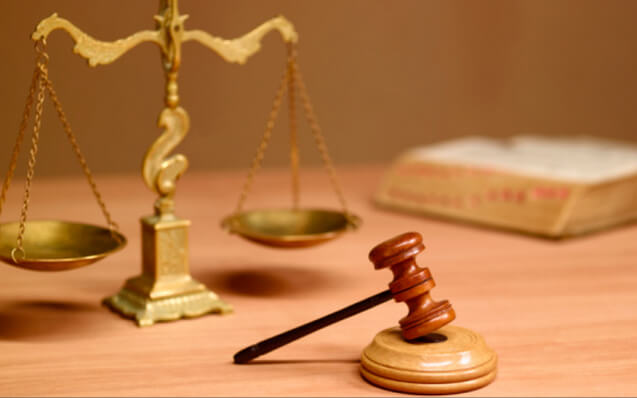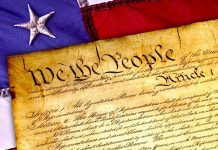This article is written by Varchaswa Dubey from JECRC University, Jaipur. This article is an exhaustive work on the Law of evidence and rule of law and the connection between them.
Table of Contents
Introduction
Every court of law, which is unbiased, operates on the availability of evidence present in front and thereafter punishes the accused if the guilt is proved beyond a reasonable doubt. The law of evidence is that branch of law that deals with proving the alleged offences, usually by the prosecution in criminal cases.
Rule of law is the ultimate authority on the land which acts as a guardian for the society and the laws governing society. The principle of rule of law is to safeguard citizens and prevent any discrimination or violation of rights of the citizens by authority or any legislation enacted by the law-making authorities.
Law of evidence – the concept
According to Black’s Law dictionary, evidence refers to “Any species of proof, or probative matter, legally presented at the trial of an issue, by the act of the parties and through the medium of witnesses, records, documents, concrete objects, etc., to induce belief in the minds of the court or jury as to their contention.”
Law of evidence is the principle that brings home the guilt of the accused in criminal cases and provides rights and remedies to the plaintiff in civil matters. The law of evidence includes documents, statements, eye-witnesses, etc. which support the allegations made by either party to the legal proceedings to convert the allegation into a fact.
Origin of the law of evidence
Hindu period
The origin of the law of evidence can be traced back to ancient India under ‘Hindu Dharmashastras’ where the objective was to unearth the truth. Under the traditional system, the judge must find out the truth by using his knowledge and skills to the evidence presented to him.
The Hindu law recognized three types of shreds of evidence, ‘Lekhya’, ‘Sakshi’, and ‘Bhukhti’:
- ‘Lekhaya’ was referred to the document which was written by the parties themselves in the court of the king,
- ‘Sakshi’ was referred to the witnesses, and it was the duty of the judge to determine the truth after observing the behaviour of witnesses,
- ‘Bhukhti’ was referred to as possession of the property.
Muslim period
Later during the reign of Muslims, the law of evidence became more advanced and modern. Under Muslim law, human actions were assumed to be morally indifferent, and express evidence was required to declare a particular act prohibited or obligatory. The Muslim law did not consist of any concept but the concept of justice, which is also considered an attribute of god according to al – Quran.
Muslim laws did not apply to non-muslims, especially Hindus, and all the personal affairs of non-muslims were settled by their respective religious laws. The Muslims also introduced the concept of ‘Vakils’, i.e. lawyers who used to act in good faith and were paid by the state.
British period
The First Law Commission, chaired by Lord T.B. Macually was constituted in the year 1833 to codify personal laws, civil and criminal laws, and laws of non-Hindus and non-muslims. The Third Law Commission, appointed under the chairmanship of Lord Romilly, was constituted to prepare substantive law for India and as a consequence, the committee submitted 7 reports, one of them being the “Evidence Bill”, but it was rejected on the grounds of being unsuitable to Indian conditions.
The contemporary Indian evidence law was inherited by the British rule in India and one such legislation was the law of evidence which was enacted on 12 March 1872, when a bill drafted by James Fitzjames Stephen was considered by 13 members of the Viceroy’s Legislative Council. The Bill was enforced on 1st September 1872 as The Indian Evidence Act, 1872.
Objectives of the law of evidence
The objectives of law of evidence:
- It creates reliability, by unearthing the truth of the case,
- It eliminates the illegally obtained evidence, and provides with the right to a fair trial,
- It protects the witnesses and parties of a case from any type of violation of rights or discrimination as evidence is only accepted after both the parties have seen/heard it,
- It does not take into consideration all types of evidence, because irrelevant evidence is inadmissible in court, therefore saving time and resources of the court,
- It aims at fairness as it entertains both the party to a case, therefore promoting non-discrimination and justice,
- It promotes transparency as any evidence presented by the victim or the defendant is made available to the court and is kept in the record book.
Rule of law – the concept
The doctrine of rule of law only acknowledges the supremacy of law, and that law is the only guardian of society. Rule of law restricts the vague and immoral decisions of the administration and is considered an essential factor of society by most nations. Under rule of law, even if there is a representative or ruler, the land will only be governed by the established law and the ruler or administration is also under an obligation to follow rule of law.
Origin of the rule of law
The principles of rule of law can be traced back to the Indian philosophy of Dharma where moral authority was considered to be the rule of law. The Upanishads also consist of theories of rule of law which states that “law is the king of the kinds” and no one is higher than the law, not even the king. Chanakya was of the similar opinion that kings must also be governed by the rule of law.
The other origins of rule of law are believed to be given by Aristotle during the 4th Century B.C. when he distinguished “the rule of law” from “that of any individual”. Plato, (c. 428–347 B.C.) in his work concerning law said, “if the law is the master of the government and the government is its slave, then the situation is full of promise and men enjoy all the blessings that the gods shower on a state.”
Under English Law, Edward Coke is believed to be the first to give the concept of rule of law when he stated that even a king shall be under God and law. The Magna Carta of 1215, issued by King John of England, was responsible for imposing the rule of law on everybody including the King.
India has inherited most of the legal principles from English law and therefore, the contemporary rule of law in India is a consequence of the inheritance of laws from the British.
Principles of rule of law
According to Prof. Dicey, rules of law contains three principles:
Supremacy of Law
It refers to the dominance of law and the prevalence of law. According to him, the Englishmen were also governed by rule of law. The concept of rule of law believes in absence of arbitrariness and wide discretion of powers of the ruler, and that the government must also work under the law and not the law under the government
Equality before Law
It refers to the equal protection and application of laws to every member of the society and there shall be no discrimination by the government in safeguarding the rights of the people.
The predominance of Legal Spirit
It refers to not only giving the fundamental or human rights to the people of the society by the government but enforcing such rights in the society and every action of the state must be backed by rule of law.
The Indian scenario
India has inherited the doctrine of rule of law by the British common law, which was incorporated in the Constitution of India, by the founding fathers of the Constitution, who made the constitution to be the supreme law of the land. The Constitution of India consists of legal provisions which prevail over all the three pillars of democracy, i.e. legislative, executive, and the judiciary. All of them are governed by the rule of law and if anyone violates the provisions of the constitution, such acts shall stand ultra vires. The preamble and Part III of the Constitution of India also reflect the established rule of law.
According to Article 13 of the Constitution of India, any law which is in contravention to Part III, i.e. the fundamental rights, shall stand void and still if a citizen of India is of the view that his/her fundamental rights are being violated by any Act/legislation then such aggrieved person has the right to reach High Court or Supreme Court of India under Article 226 and Article 32 of the Constitution of India, respectively.
Under the Constitution of India, the judiciary is the primary guardian of the rule of law and if any Act or legislation is found to be contrary to the Part III of the Constitution, the judiciary has every right to strike down such legislation after undertaking the due process of law.
Conflict of the law of evidence and rule of law
It can be argued that the law of evidence must be free to depart from the rule of law as understood since it is one of the aspects of the procedural law and particularly of procedure at trial, that nothing must be lost by merely allowing the parties to the case to present any kind of evidence they desire, and eventually, it is left on the wisdom of the court to determine the accountability of the parties, with the assistance of personal experience of seeing the witnesses during the trial and when such witness is examined or cross-examined by the officer of the courts.
On one hand, it is the rule of law that no one should go unheard during a trial while on the other hand, it is also pertinent to note that while leaving the admissibility on the wisdom of the court may cause miscarriage to justice since, the presiding judicial officer may emphasize on evidence more than rule of law, which is, to punish a person only when his guilt is proved beyond a reasonable doubt.
The absence of clear rules for the judges will encourage elongated arguments for, or against the admissibility of particular evidence, which may eventually lead to either inadmissibility of the evidence or such evidence may cause benefit to the wrongdoer.
The connection of rule of law and law of evidence
According to Thayer, the law of evidence may be an illogical piece, but by no means irrational patchwork. The procedural law is directly responsible to safeguard the rule of law because the law of evidence not only protects the unprivileged but also maintains all the principles which are similar to that of rule of law.
The law of evidence was enacted to maintain the rule of law as the principles of rule of law, i.e. equality before the law, the supremacy of law, and the predominance of legal spirit are reflected in evidence laws.
The rule of law is superior to the law of evidence because the law of evidence is amendable, interpretable, and operates on the wisdom and understanding of the judges, witnesses, and the circumstances surrounding the case; however, rule of law on the other hand is absolute and cannot be amended.
The rule of law is the ultimate guardian of society and to uphold the position of rule of law, the law of evidence prevails, so that every wrongdoer can be punished and justice prevails in the society. Law of evidence can certainly maintain the rule of law because the legislation of evidence punishes the guilty and bestows justice to the victim, and this is the ultimate aim of rule of law.
Law of evidence goes hand in hand with rule of law since rule of law is also concerned with the betterment of the society and society will only prosper when the law of evidence incarcerates bad elements of the society.
Conclusion
It is well settled legal jurisprudence that rule of law prevails as the ultimate law of the land and to maintain the position of rule of law, the piece of evidence presented in the court of law are essential since the law of evidence imprisons the wrongdoer, the justice prospers and constant justice is the ultimate aim of rule of law. The rule of law and the law of evidence are essential to each other as the law of evidence is the defender of the rule of law and the rule of law may not be as effective without the law of evidence as it is with the presence of the law of evidence.
References
- https://www.lawctopus.com/academike/concept-historical-background-evidence/
- https://www.jstor.org/stable/40388772
- https://scholarlycommons.law.case.edu/cgi/viewcontent.cgi?article=3731&context=caselrev
- http://ijlljs.in/wp-content/uploads/2017/08/Rule_of_Law.pdf
Students of Lawsikho courses regularly produce writing assignments and work on practical exercises as a part of their coursework and develop themselves in real-life practical skills.
LawSikho has created a telegram group for exchanging legal knowledge, referrals, and various opportunities. You can click on this link and join:
https://t.me/joinchat/J_0YrBa4IBSHdpuTfQO_sA
Follow us on Instagram and subscribe to our YouTube channel for more amazing legal content.
 Serato DJ Crack 2025Serato DJ PRO Crack
Serato DJ Crack 2025Serato DJ PRO Crack










 Allow notifications
Allow notifications



